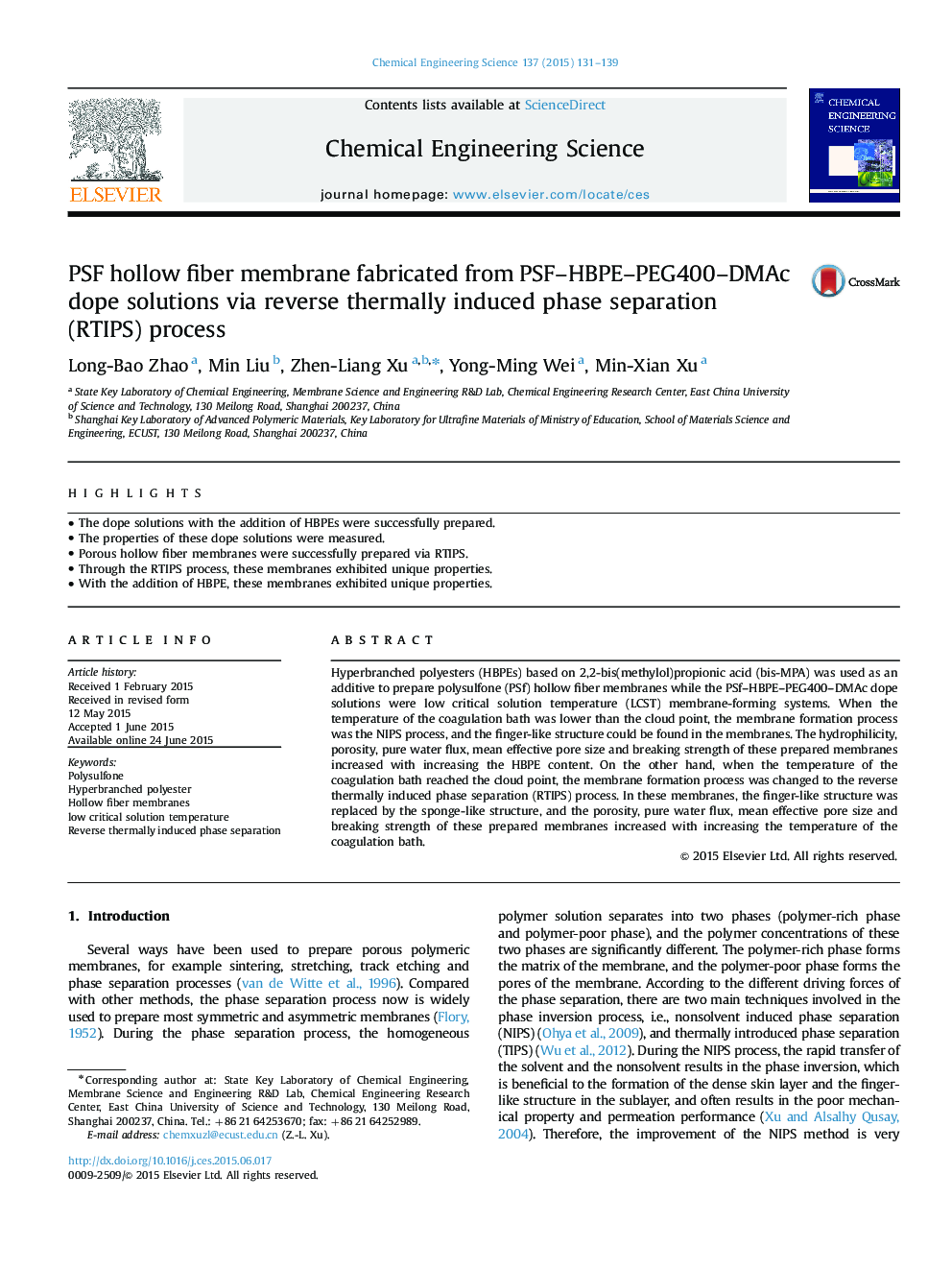| Article ID | Journal | Published Year | Pages | File Type |
|---|---|---|---|---|
| 6589407 | Chemical Engineering Science | 2015 | 9 Pages |
Abstract
Hyperbranched polyesters (HBPEs) based on 2,2-bis(methylol)propionic acid (bis-MPA) was used as an additive to prepare polysulfone (PSf) hollow fiber membranes while the PSf-HBPE-PEG400-DMAc dope solutions were low critical solution temperature (LCST) membrane-forming systems. When the temperature of the coagulation bath was lower than the cloud point, the membrane formation process was the NIPS process, and the finger-like structure could be found in the membranes. The hydrophilicity, porosity, pure water flux, mean effective pore size and breaking strength of these prepared membranes increased with increasing the HBPE content. On the other hand, when the temperature of the coagulation bath reached the cloud point, the membrane formation process was changed to the reverse thermally induced phase separation (RTIPS) process. In these membranes, the finger-like structure was replaced by the sponge-like structure, and the porosity, pure water flux, mean effective pore size and breaking strength of these prepared membranes increased with increasing the temperature of the coagulation bath.
Related Topics
Physical Sciences and Engineering
Chemical Engineering
Chemical Engineering (General)
Authors
Long-Bao Zhao, Min Liu, Zhen-Liang Xu, Yong-Ming Wei, Min-Xian Xu,
